- Top Employee Onboarding Software
- Why Use Employee Onboarding Software?
- Key Features of Effective Onboarding Software
- How To Choose The Right Onboarding Software?
- Which is the Best Onboarding Software?
- Frequently Asked Questions (FAQs)
- What Is Upskill And Reskill?
- Difference Between Reskilling And Upskilling
- Upskilling for Workplace Advancement
- Reskilling for Career Transformation
- Crafting Successful Upskill and Reskill Strategies
- Upskill And Reskill Strategizing: Things to Keep in Mind
- Measuring the Impact of Skill Development Initiatives
- Frequently Asked Questions
- What’s a Skill Gap?
- Employee Skill Gap Analysis: Why Do We Need It?
- How To Conduct Employee Skill Gap Analysis?
- Addressing Skill Gaps Through Training and Hiring
- Utilizing Skills Gap Analysis for Strategic Planning
- Leveraging Employee Skill Gap Analysis: Things To Keep In Mind
- Frequently Asked Questions
- Transformative Role of AI in Talent Acquisition
- Impact of AI on Business Recruiting
- Overcoming Challenges in AI-Driven Talent Acquisition
- Starting with AI in Talent Acquisition
- Future Landscape of AI in Talent Acquisition
- Frequently Asked Questions
- HR In The Hot Seat - Challenges With Evolving Workforce
- Mastering Effective HR Management: Tips For Overcoming Challenges
- Summing Up
- The Future of HR: Key Trends for 2024
- Skill-Based Hiring
- Prioritizing Employee Experience, Engagement & Well-being
- AI-Empowered Workforce Evolution and Its Impact
- Taking Diversity, Equity, and Inclusion Beyond Mandates
- Hybrid and Remote Work
- Embracing the Gig Economy and Blended Workforce
- Transparent HR Practices
- Climate Change Adaptation in HR Practices
- Leveraging HR Analytics for Data-Driven Decisions
- Continuous Learning & Development to Improve Productivity
- The Office Buzz in 2024
- Bottom Line - HR Operating Model Needs A Shift
- Importance and Impact of Recognizing Employee Birthdays
- Professional Birthday Wishes for Employees (All Experience Levels)
- Personalized Birthday Wishes for Employees in Different Roles
- Fun Birthday Wishes for Employees (with Templates)
- Birthday Wishes for Remote Employees
- Heartfelt Birthday Wishes for Employees
- Belated Birthday Wishes for Employees
- Simple & Sweet Birthday Wishes for Employees
- Celebrating Employee Birthdays: Ideas and Traditions
- Tips and Ideas for Sending Birthday Wishes to Employees
- Closing Thoughts
- Frequently Asked Questions
- What Is An Employee Referral?
- Benefits of Implementing Employee Referral Programs
- Setting Up an Effective Employee Referral Program
- Employee Referral Email
- Employee Referral Scheme
- Overcoming Challenges of Employee Referrals
- Companies with Best Employee Referral Programs
- Employee Referral Programs: Best Practices
- Closing Thoughts
- Frequently Asked Questions (FAQs)
- Importance of Team Building Activities
- Types of Team Building Activities
- Outdoor Team Building Activities for Employees
- Indoor Team Building Activities for Employees
- Easy Team Building Activities for Remote Employees
- Team Building Activities For New Employees (Icebreakers)
- Fun Team Building Activities for Different Goals
- To Boost Communication and Collaboration
- To Reduce Stress Levels and Promote Well-being
- Aligning Team Purpose and Values with Strategic Activities
- Final Remarks
- Frequently Asked Questions
- Importance of Employee Appreciation Quotes
- Work Appreciation Quotes for Employees
- Employee Appreciation Quotes for Hard Work Recognition
- Employee Appreciation Quotes for Teamwork and Collaboration
- Appreciation Quotes for Celebrating Employee Anniversaries and Milestones
- Employee Appreciation Quotes for Strong Work Ethics
- Employee Appreciation Quotes for Project & Goal Completion
- Employee Appreciation Quotes for Quality of Work
- Employee Appreciation Quotes for Creativity and Innovation
- Appreciation Quotes for Managers
- Peer-to-Peer Employee Appreciation Quotes
- Appreciation Quotes for Employees Leaving the Company
- Employee Appreciation Quotes for Thoughtful Gestures
- Funny Employee Appreciation Quotes
- Short Employee Appreciation Quotes
- Employee Appreciation Quotes for Different Roles
- Employee Appreciation Quotes for Senior Leadership
- Creative Ways to Use Employee Appreciation Quotes
- Summary
- Frequently Asked Questions (FAQs)
- What is Employee Satisfaction?
- Importance of Employee Satisfaction
- Objectives of Employee Satisfaction
- Employee Satisfaction vs. Employee Engagement
- Key Reasons for Employee Dissatisfaction
- Strategies for Improving Employee Satisfaction
- Ways to Measure Employee Satisfaction
- Best Practices for High Employee Satisfaction
- Final Remarks
- Frequently Asked Questions (FAQs)
- How to Craft Effective Employee Appraisal Comments
- Key Areas to Focus in Performance Review
- Comments On Hard Work & Dedication
- Assessing Interpersonal Skills
- Evaluating the Ability to Collaborate & Work in Teams
- Gauging Punctuality
- Commenting on Communication Style
- Reviewing Time Management and Productivity
- Leadership in Performance Appraisals
- Assessing Creativity & Innovation
- Evaluating Problem-Solving Abilities
- Recognizing Flexibility and Dependability in Reviews
- Employee Appraisal Comments for Different Roles
- Summary
- Frequently Asked Questions (FAQs)
- Employee Grievance Meaning
- Importance of Employee Grievance Process
- Types of Workplace Grievances
- Reasons for Employee Grievances
- Employee Grievance Procedure
- Steps in the Employee Grievance Handling Process
- Employee Grievance Form Example
- Final Remarks
- Frequently Asked Questions (FAQs)
- What is Company Culture?
- Importance of Company Culture
- Types of Company Culture
- Factors Contributing to Organizational Culture
- Assessing & Developing Corporate Culture
- Company Culture - It’s not just Perks or Feels
- Good Company Culture Examples
- Developing Company Culture: Best Practices
- Closing Thoughts
- Frequently Asked Questions (FAQs)
- What is Employee Empowerment?
- Benefits of Empowering Employees
- Employee Empowerment vs. Micromanagement
- Strategies for Effective Employee Empowerment
- Role of Managers in Fostering Empowerment
- Organizational Structure Supporting Empowerment
- Overcoming Barriers to Employee Empowerment
- Frequently Asked Questions (FAQs)
- What is Employer Branding?
- Importance of Employer Branding Strategy
- How to Build an Employer Branding Strategy?
- Strategies for Building a Strong Employer Brand
- How to Measure and Boost Your Employer Branding Success?
- Examples of Strong Employer Brand Strategy
- Best Practices for an Effective Employer Branding Strategy
- Closing Thoughts
- Frequently Asked Questions (FAQs)
- What are Employee Wellness Programs?
- Importance of Employee Wellness Programs
- Examples of Employee Wellness Programs
- Real-Life Examples of Corporate Wellness Programs
- Strategies for Encouraging Participation
- Supporting Diverse Employee Needs
- Creating Comprehensive Wellness Programs
- Measuring the Impact on Business and Employees
- Closing Thoughts
- Frequently Asked Questions (FAQs)
- What is Talent Management?
- Developing a Winning Talent Management Strategy
- Models and Frameworks
- Tips for Framing Effective Talent Management Strategy
- Looking Ahead: Recent Trends in Talent Management
- Frequently Asked Questions
- Role of AI in HR: Addressing Common Challenges
- Artificial Intelligence in HR Processes
- AI Tools for HR Functions
- How to Adopt AI in HR?
- Addressing Challenges of AI in HR
- Ethical and Responsible AI Use
- The Future of AI in HR
- Closing Thoughts
- Frequently Asked Questions
- What is Performance Management?
- Elements of Effective Performance Management
- Performance Management Cycle
- Differentiating Performance Management
- Benefits of Performance Management With Examples
- Challenges faced in Performance Management and their Solutions
- Future Trends in Performance Management
- Frequently Asked Questions
- Changing Role of HRM
- Changing Role Of HR Manager
- Technology and the Changing Role of HRM
- The Rise of AI and Machine Learning in HR
- Mobile Technology's Impact on HR Practices
- The Significance of People Analytics in HR
- Navigating the Future of HR Technology
- Final Remarks
- Frequently Asked Questions
- Compensation Management Meaning
- Compensation Types
- Breaking Down The Compensation Management Process
- HR Software for Compensation Management
- Current Trends in Compensation Management
- Frequently Asked Questions
- Defining Flexible Work Arrangements
- Flexible Working: Advantages for Businesses
- Challenges of Flexible Work Arrangements
- Crafting Flexible Working Practices
- Types Of Flexible Work Arrangements
- Comparing Flexible Work Arrangements
- Real-Life Examples of Flexible Work Arrangements
- Final Remarks
- Frequently Asked Questions
- Conflict Resolution Meaning
- Conflict Origins
- Tried & Tested Conflict Resolution Strategies
- Methods of Conflict Management at Workplaces
- Conflict Resolution Strategies: Top Management Tips
- Summary
- Frequently Asked Questions
- Career Development Meaning
- Career Development Plan for Employees
- Career Development in HRM: Growth Ideas For Employees
- Issues in Career Development and Their Solutions
- Closing Thoughts
- Frequently Asked Questions
- Understanding Compensation
- Exploring Benefits
- Difference between Compensation and Benefits
- Compensation & Benefits Structure
- Final Remarks
- Frequently Asked Questions
- Defining Recruitment in HR Practices
- Exploring Talent Acquisition in HR
- Understanding Talent Acquisition vs Recruitment
- When to Recruit or Acquire Talent
- Talent Acquisition vs Recruitment: Responsibilities
- From Recruitment To Talent Acquisition
- Closing Thoughts
- Frequently Asked Questions
- Work Culture Meaning
- Types of Work Cultures
- Components of Culture
- Best Work Culture Examples Set By Top Companies
- Creating a Positive Work Culture
- Closing Thoughts
- Frequently Asked Questions
- Defining Learning vs Development
- Importance of Learning and Development
- L&D Activities for Employees
- Choosing the Right L&D Activities
- Crafting an Effective L&D Strategies
- Aligning L&D Strategy with Business Goals
- Designing Engaging Learning Journeys
- Learning and Development Process: KPIs
- ROI in Learning and Development
- Emerging Trends in L&D
- Closing Thoughts
- Frequently Asked Questions
- What Is Leadership Development?
- Key Skills for Leaders
- How To Develop Leadership Skills in Organizations?
- What Is A Leadership Development Program?
- How To Develop A Leadership Development Program?
- Example of A Leadership Development Plan
- Benefits of Leadership Development Training
- Frequently Asked Questions
- Defining Diversity Training
- Importance of Diversity Training
- What are the Types of Diversity?
- Types of Diversity Training Methods
- Diversity Training Activities
- Choosing A Diversity Training Program
- How to Implement Diversity Initiatives
- Best Diversity Training Programs (Real-Life Examples)
- Improving the Effectiveness of Diversity Training
- Tracking and Evaluating the Results of DE&I Training Efforts
- Essential Elements for Successful Diversity Training
- Closing Thoughts
- Frequently Asked Questions
- Defining Occupational Health & Safety
- Evolution of Workplace Health and Safety
- Identifying Common Workplace Hazards
- Global Impact on Occupational Health & Safety
- Managing Employee Health and Safety Risks
- Occupational Health and Safety Problems
- Future of Occupational Health and Safety
- Frequently Asked Questions
- Employee Orientation Defined
- Employee Onboarding Explained
- Orientation and Onboarding: Understanding the Difference
- Importance of Orientation and Onboarding
- Crafting Comprehensive Integration Strategies
- Quick Tips for Orientation and Onboarding
- Frequently Asked Questions
- What is HR Metrics?
- Importance of HR Metrics
- HR Metrics Examples in Recruitment
- HR Metrics Examples in Employee Retention
- HR Metrics Examples in Revenue
- Other Common HR Metrics
- Soft HR Metrics Example
- HR Metrics Formula
- Utilizing HR Metrics Effectively
- Future of HR Metrics
- Summary
- Frequently Asked Questions
- Defining Decision Making Process
- Key Concepts In Decision Making
- Decision Making & Problem Solving
- Tips For Improving Decision Making Skills
- Selected Practice Questions & Answers
- Conclusion
- Frequently Asked Questions (FAQs)
- A case(s) of miscommunication
- The devil is in the (resume) details
- One for the complaints!
- What is an Exit Interview?
- Benefits of Exit Interviews to an Organization
- How to Conduct Exit Interviews?
- Exit Interview: Sample Questions to Ask
- Overcoming Challenges of Exit Interviews
- Exit Interviews: Best Practices
- Closing Thoughts
- Frequently Asked Questions
- Technology in the Workplace
- Benefits of Tech Integration
- Technology in the Workplace: Key Functions
- How Technology Normalized Remote Work
- Workplace Technology: Top Tools and Software
- Steps for Effective Technology Implementation
- Overcoming Tech Implementation Challenges
- Ethical Considerations in Tech Use
- Keeping Pace with Tech Trends
- Closing Thoughts
- Frequently Asked Questions
- What is Ethical Leadership?
- Principles of Ethical Leadership
- Difference between Ethics and Integrity
- Importance of Ethical Leadership
- Ethical Leadership in Practice
- Overcoming Challenges
- Frequently Asked Questions
- Embracing Change Management
- Mastering People Analytics
- Enhancing Stakeholder Relationships
- Navigating Diversity, Equity & Inclusion
- Upholding Ethics and Data Privacy
- Developing Critical Thinking
- Advancing Negotiation Techniques
- Fostering Inter-departmental Collaboration
- Building Resilience in HR
- Frequently Asked Questions
- What is Mental Health?
- Benefits of a Mentally Healthy Workforce
- Prioritising Mental Health: Creating a Culture of Support
- Final Remarks
- Frequently Asked Questions
- Gen Z vs Millennials - What is the difference?
- Retain and Engage Gen Z Employees: Need and Strategies
- Strategies to Retain and Engage Gen Z Employees
- Rethinking Requirements
- Final Remarks
- Frequently Asked Questions
- Understanding Millennial Leadership Needs
- Key Leadership Skills for Millennials
- How To Develop Millennial Into Leaders
- Additional Strategies to Develop Leaders
- Learning Preferences of Millennials
- Benefits of Investing in Millennial Leaders
- Closing Thoughts
- Frequently Asked Questions
- Understanding Fluff
- Examples of Interview Fluff
- Identifying Interview Fluff
- Addressing Interview Fluff
- Seeing Through the Fluff
- Frequently Asked Questions
- What is the Gender Pay Gap?
- Is the Gender Pay Gap Real?
- Factors Affecting the Gender Pay Gap
- How Age Impacts Women’s Earnings
- The ‘Motherhood Penalty’
- Education's Role in Wage Differences
- Racial and Ethnic Disparities in Pay
- Closing the Gender Gap
- Frequently Asked Questions
- Top Weirdest Late-To-The-Office Excuses
- The Fine Art of Balancing Wit and Wisdom in HR
- Understanding Social Media Recruiting
- Crafting Your Social Media Recruitment Strategy
- Implementing Your Strategy Effectively
- Popular Platforms for Recruitment
- Navigating the Downsides of Social Media Recruiting
- Measuring Success and Adjusting Strategy
- Summary
- Frequently Asked Questions
- Who Is A High Potential (HIPO) Employee?
- Characteristics of A High Potential (HIPO) Employee
- High Potential Employee Identification
- Grooming High Potential Employees
- Why High Potential Employees Leave
- How Do You Retain High Potential Employees?
- High Potential Employee Development: Best Practices
- Closing Thoughts
- Frequently Asked Questions
- What is Digital Fluency?
- Why Digital Fluency Matters?
- Difference between Digital Literacy and Digital Fluency
- Key Components of Digital Fluency
- Achieving Digital Fluency
- Overcoming Challenges
- Future of Workforce Digital Fluency
- Frequently Asked Questions
- What is Loud Quitting?
- Pros and Cons of Loud Quitting
- Reasons Behind the Trend
- Analyzing the Impact
- How HR Can Navigate the Loud Quitting Uproar
- Preventive Strategies
- Closing Thoughts
- Frequently Asked Questions
- Defining Emotional Intelligence in HR
- Why Emotional Intelligence Matters for HR Leaders
- How To Build Emotional Intelligence in HR
- Integrating EQ into HR Practices
- Impact of EQ on Company Culture
- Emotional Intelligence in HR: Major Challenges
- Final Remarks
- Frequently Asked Questions
- Understanding Internal Job Posting
- Internal Job Posting: Pros and Cons
- The Internal Job Posting Process
- Writing Effective Ads for Internal Job Posting
- Strategies for Success of Internal Job Posting
- Summary
- Frequently Asked Questions
- Understanding Workplace Bias
- Common Types of Bias in HR
- Closing Thoughts
- Frequently Asked Questions
- What is a Dry Promotion?
- Dry Promotion: Pros and Cons for Companies
- Impact of Dry Promotion on Employee Retention
- Preventing Talent Loss After Dry Promotions
- Closing Thoughts
- Frequently Asked Questions
- What Is A Stay Interview?
- Importance Of Stay Interviews
- Benefits And Challenges Of Stay Interviews
- Planning And Conducting Stay Interviews
- Stay Interviews: 20 Sample Questions To Ask
- Best Practices For Effective Stay Interviews
- Summary
- Frequently Asked Questions
- Who Is A Boomerang Employee?
- Reasons For Returning
- Benefits Of Hiring Boomerang Employees
- Challenges Of Rehiring
- Interviewing Boomerang Candidates: Sample Questions
- Enhancing The Hiring Process
- Making Informed Decisions
- Final Remarks
- Frequently Asked Questions
- Talent Pipeline Meaning
- Significance of Talent Pipelines
- Advantages of a Talent Pipeline
- Building a Talent Pipeline
- Maintaining a Talent Pipeline
- Attracting Top Talent
- Implementing the Strategy
- Frequently Asked Questions
- What is Micromanagement?
- Recognizing Micromanagement
- Leadership versus Micromanagement
- Keeping Micromanagement in Check
- Beyond Micromanagement
- Summing Up
- Frequently Asked Questions
- Recognizing Signs Of A Bad Hire
- Understanding The Impact On Teams
- Dealing With A Bad Hire
- Preventing Future Bad Hires
- Closing Thoughts
- Frequently Asked Questions
- Defining Neurodiversity
- Importance of Neurodiversity in the Workplace
- Moving Towards Inclusive Environments
- Final Remarks
- Frequently Asked Questions
- Understanding the Generation Gap
- Multigenerational Workforce: Debunking Stereotypes
- Strategies for Bridging the Gap
- Benefits of a Multigenerational Workforce
- Final Remarks
- Frequently Asked Questions
- Defining Productivity Theatre: All Show, No Go
- 5 Key Drivers of Fake Productivity
- Solutions to Combat Productivity Theatre
- Summary
- Frequently Asked Questions
- Defining Grumpy Staying
- Why do Grumpy Stayers not Leave?
- Recognizing the Signs
- Exploring the Causes
- Understanding the Impact
- Addressing the Issue
- Taking Action: Addressing Grumpiness with Empathy
- After the Conversation
- When Grumpy Staying Continues
- Closing Thoughts
- Frequently Asked Questions
- The Rationale Behind Office Peacocking
- Impact on Company Culture
- Impact on Employees
- Case Studies: Examples of Office Peacocking
- The Downside: Potential Pitfalls of Office Peacocking
- Practical Tips for Implementing Office Peacocking
- Frequently Asked Questions
- 13 Common Mistakes Young Managers Make
- Strategies To Avoid Mistakes (Individual Growth)
- How Young Managers Can Boost Teamwork
- Learning From Errors
- Summary
- Frequently Asked Questions
- Understanding Great Regret - What causes the shift shock?
- Impact of Great Regret
- How can HR help make the situation better?
- Closing Thoughts
- Frequently Asked Questions
- Understanding the HR Budget
- Key Components of an HR Budget
- Preparing an HR Budget Step-by-Step
- Importance of HR Budgeting in Management
- Final Remarks
- Frequently Asked Questions
- What are Pre-Employment Assessments?
- Importance of Pre-Employment Testing
- Types of Pre-Employment Assessments
- 15 Tips for Creating Effective Pre-Employment Assessments
- Closing Thoughts
- Frequently Asked Questions
- Exploring the Productivity Paradox
- Understanding the Impact of Solow Paradox
- Productivity Paradox: Why it Matters for Recruiters & HRs
- Identifying Causes and Challenges
- Strategies for Enhancing Productivity
- AI & the Modern-Day Productivity Paradox
- Beyond Technology: Building a Productive Workforce
- Summary
- Frequently Asked Questions
- Understanding the Great Reshuffle 2.0
- Preparing Leaders for the Change
- HR’s Role in Handling Great Reshuffling 2.0
- The Way Ahead
- Frequently Asked Questions
- Definition Of Managerial Grid
- Managerial Grid Theory Explained
- Application Of Managerial Grid
- Criticisms And Limitations
- Evolution And Contemporary Perspectives
- Integrating Managerial Grid With Other Models
- Practical Steps For Implementing Managerial Grid
- Conclusion
- Frequently Asked Questions
- Understanding Skills Taxonomy
- Why do we Need Skills Taxonomy?
- Benefits of Skills Taxonomy
- Components of Skills Taxonomy
- Building a Skills Taxonomy: A Step-by-Step Guide
- Skill Taxonomies vs Intelligence Tools
- Closing Thoughts
- Frequently Asked Questions
- Definition Of Team Building
- Stages Of Team Development
- Top 10 Strategies For Effective Team Building
- Team Building Activities
- Best Practices For Effective Team Building
- Setting Team Building Objectives
- Challenges In Team Building
- Conclusion
- Frequently Asked Questions (FAQs)
- Defining Job Shadowing
- Unpacking the Benefits
- Setting Up the Experience
- Job Shadowing vs Internship
- Dos and Don'ts for HR Professionals
- Closing Thoughts
- Frequently Asked Questions
- Employee Journey Mapping: Meaning & Importance
- Stages of the Employee Journey
- Steps for Effective Mapping
- Employee Journey Map: Where does it begin?
- Employee Journey Map: Template
- Best Practices & Tips
- Summary
- Frequently Asked Questions
- Why are Performance Appraisals needed?
- Evolution of Performance Management
- Modern Performance Practices
- Benefits of Modern Performance Appraisals
- The Future
- Frequently Asked Questions
- Is Experience the Sole Indicator of Success?
- Why Hire Inexperienced Talent?: Key Advantages
- Skills to Look For in Inexperienced Talent
- Challenges and Considerations in Hiring Inexperienced Talent
- Final Remarks
- Frequently Asked Questions
- What is a Company Retreat?
- Company Retreat Ideas: Team-Building & Exploration
- Relaxation and Celebration
- Planning Your Retreat: Things to Keep in Mind
- Closing Thoughts
- Frequently Asked Questions
- Understanding HR Forecasting
- HR Forecasting Key Concepts
- Steps for Implementing HR Forecasting
- Common HR Forecasting Methods
- Closing Thoughts
- Frequently Asked Questions
- What is ESG?
- HR and ESG - Why Care?
- ESG in HR Strategy
- Challenges for HR
- Future of ESG in HR
- Frequently Asked Questions
- Defining the Great Betrayal
- Reasons for Its Spread
- Impact on Workers
- Impact on Corporations
- Rebuilding Trust & Valuing Employees
- Closing Thoughts
- Frequently Asked Questions
- Importance of Clear Expectations
- Setting Expectations Early
- Communicating Expectations Effectively
- Differentiating Expectations
- Reviewing and Adjusting Expectations
- Summing Up
- Frequently Asked Questions
- Understanding KRA Frameworks And Models
- KRAs vs KPAs and KPIs
- Monitoring and Tracking KRAs
- KRAs in Various Roles
- Impact of KRA Frameworks and Models on Organizational Success
- Frequently Asked Questions
- Where: The Place of Work
- When: The Time of Work
- How Much Work: Alternate Employment Models
- Who Does the Work: Intelligence
- Designing Organizations with the Four Dimensions of Work
- Summing Up
- Simplifying Processes: The Foundation of Efficiency
- Reducing Unnecessary Meetings: Reclaiming Valuable Time
- Building Strong Accountabilities: Ensuring Responsibility
- Role of HR in Addressing Inefficiencies
- Continuous Improvement: A Commitment to Excellence
- Leadership's Role in Driving Efficiency
- Conclusion: A Holistic Approach to Efficiency
- Understanding Financial Freedom
- Benefits of Empowering Employees Financially
- Empowering Employees Through Financial Literacy
- Financial Topics That Need Attention Based On Career Stage
- Summing Up
- Frequently Asked Questions
- Defining Employee Voice
- Benefits of Amplifying Employee Voice
- Strategies and Tools
- Encouraging Participation
- Closing Thoughts
- Frequently Asked Questions
- Appraisal Blues: Signs of Unhappy Employees
- Addressing Unhappiness Post-Appraisal
- Non-Monetary Solutions for Dissatisfied Employees
- Summing Up
- Frequently Asked Questions
- Women in the Middle Eastern Workforce
- Importance of DEIB
- Role of HR in Building Inclusive Workplaces for Women
- Measuring Inclusion Progress: Key Metrics
- Closing Thoughts
- Frequently Asked Questions
- Preparing for the Conversation
- Conducting the Conversation
- Best Practices for the Talk
- After the Conversation
- Helping Employees Grow
- Frequently Asked Questions
- Understanding HR Exhaustion
- Factors Leading To HR burnout
- Impact Of HR Burnout
- Strategies To Prevent And Manage HR Burnout
- Role Of Technology In Preventing Burnout
- Celebrating HR Successes
- Summary
- Frequently Asked Questions
- Common Mistakes When Hiring Young Talent
- Building Connections with Candidates
- Summary
- Frequently Asked Questions
- Walking a mile in the employee’s shoes
- Conducting Humane Layoffs
- Remote Layoffs Management
- Supporting Laid-off Workers
- Managing the Aftermath
- Wrapping Up
- Frequently Asked Questions
- Importance of Shortening Time-to-Hire
- Shortening Hiring Time: Pre-Application Stage
- Reducing Hiring Time: Application Stage
- Hacks to Shorten Hiring Time: Interview Stage
- Reducing Hiring Time: Offer Stage
- 5 Other Important Hacks & Strategies
- Final Remarks
- Frequently Asked Questions
Exploring Ethical Leadership With Examples [Assessment Questionnaire Inside!]
![Exploring Ethical Leadership With Examples [Assessment Questionnaire Inside!]](https://d8it4huxumps7.cloudfront.net/bites/wp-content/banners/2024/4/660f734ea743a_ethical_leadership_fi.png?d=1200x800)
Ethical leadership is not just a buzzword; it's a powerful force that drives positive change within organizations. By embodying ethical principles in decision-making, communication, and actions, leaders can foster trust, loyalty, and productivity among their teams. In this article, we will delve into the essence of ethical leadership, exploring its impact on organizational culture, employee morale, and overall success.
What is Ethical Leadership?
Ethical leadership refers to a style of leadership that emphasizes integrity, honesty, fairness, and respect for others in decision-making and actions. Ethical leaders prioritize doing what is morally right and just, even when faced with difficult choices or pressures to act otherwise. They demonstrate a strong commitment to ethical principles and values, and they strive to create an organizational culture where ethical behaviour is encouraged, recognized, and rewarded.
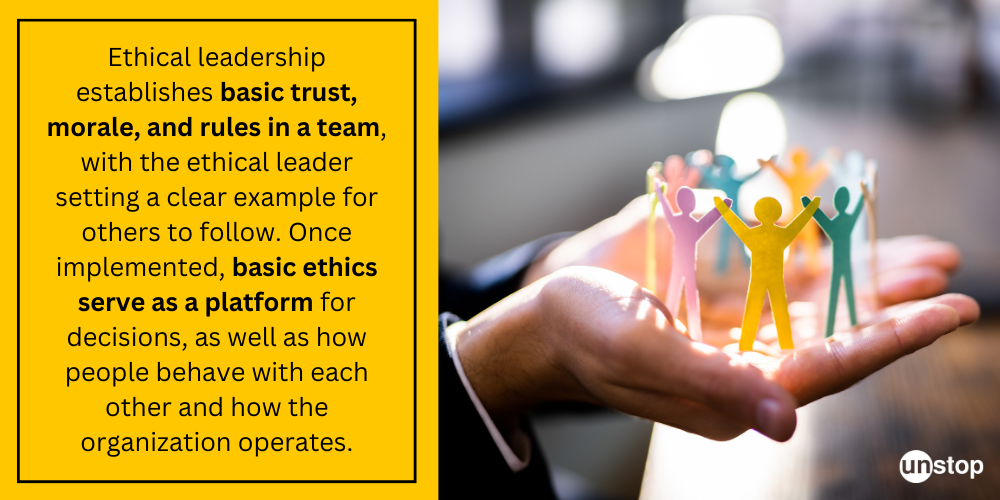
Principles of Ethical Leadership
Ethical leadership is guided by several key principles that help leaders navigate complex situations, make sound decisions, and foster a culture of integrity within their organizations. Here are some fundamental principles of ethical leadership:
- Focus on Ethics: Ethical leaders make decisions based on a strong sense of right and wrong, considering the impact on all stakeholders. They adhere to moral principles and avoid decisions that could be harmful or exploitative.
- Leading by Example: Ethical leaders are role models. They embody the values they expect from others and demonstrate ethical behavior in their own actions and decisions.
- Transparency and Trust: Building trust is essential. Ethical leaders are transparent in their communication and decision-making processes. They are honest and forthcoming, even when things are difficult.
- Fairness and Respect: Ethical leaders treat everyone with fairness and respect, regardless of position or power. They value diversity of thought and create an environment where everyone feels safe to voice their opinions.
- Focus on People: Ethical leaders prioritize the well-being of their followers and the broader community. They consider the impact of their decisions on employees, customers, and society as a whole.
Johnson & Johnson's Tylenol Crisis: A Model of Ethical Leadership
In 1982, Johnson & Johnson faced a nightmarish situation. Seven people died in the Chicago area after ingesting Tylenol capsules laced with cyanide. This wasn't a manufacturing issue, but a criminal act of product tampering. Despite this, Johnson & Johnson's response became a case study in ethical leadership during a crisis.
Putting People First
- Swift Action: Johnson & Johnson didn't hesitate. They took the unprecedented step of pulling all Tylenol capsules from shelves nationwide, even though it meant a significant financial loss. This prioritized public safety over profits.
- Transparency and Communication: The company chairman, James Burke, went on national television to inform the public about the situation. He reassured consumers and explained the actions they were taking. This open communication helped maintain trust.
- Consumer Care: Johnson & Johnson offered full refunds and even replaced capsules with tamper-evident packaging at no cost. They prioritized consumer safety and rebuilding trust in the brand.
Long-Term Impact
- Regaining Trust: Johnson & Johnson's ethical leadership paid off. While initial sales dipped, consumers were impressed by the company's response. Tylenol eventually regained its market share, demonstrating the importance of trust in crisis situations.
- Industry Standards: The Tylenol incident led to stricter packaging regulations across the pharmaceutical industry, ultimately benefiting all consumers.
Difference between Ethics and Integrity
Ethical leadership is strongly rooted in the integrity of the leader. However, the two terms are subtly different.
| Integrity | Ethics |
|---|---|
| Refers to the quality of being honest and having strong moral principles | Refers to a set of moral principles that govern a person's behavior or the conducting of an activity |
| Focuses on individual character and personal values | Focuses on societal standards and norms |
| Is about doing the right thing, even when no one is watching | Is about making decisions based on what is considered morally right or wrong |
| Involves consistency in actions, words, and beliefs | Involves evaluating actions and decisions based on moral principles |
| Can be seen as a personal trait or characteristic | Can be seen as a code of conduct or guidelines for behavior |
Importance of Ethical Leadership
Ethical leadership is crucial for organizations of all sizes and across all industries. Here's why it's so important:
- Stronger Foundations, Better Decisions: A clear ethical compass helps leaders make sound choices that consider not just short-term gains but long-term consequences. This builds a stronger foundation for the organization's future.
- Employee Trust and Engagement: Employees who trust their leaders are likelier to be engaged, productive, and loyal. Ethical leadership fosters a positive work environment where people feel valued and respected.
- Enhanced Reputation and Credibility: Ethical behaviour builds trust with customers, partners, and the public. This leads to a stronger reputation and increased credibility, which can be a significant competitive advantage.
- Reduced Risk and Costs: Unethical behaviour can lead to legal trouble, fines, and damaged reputations. Ethical leadership helps mitigate these risks and associated costs.
- Socially Responsible Culture: Ethical leaders set the tone for a socially responsible culture within the organization. This can have a positive impact on the environment, communities, and society as a whole.
- Attracting and Retaining Top Talent: In today's job market, talented individuals often prioritize working for companies with strong ethical values. Ethical leadership can be a key factor in attracting and retaining the best employees.
In essence, ethical leadership is not just the 'right' thing to do; it's also essential for building a successful and sustainable organization.
Are You An Ethical Leader?
Ethical Leadership Questionnaire: Situational Scenarios
Instructions: Please read each scenario and indicate how likely you are to respond in that situation by selecting the appropriate number.
Scenario 1: You discover that a colleague has been dishonest in reporting their work hours, claiming overtime they did not actually work.
- Highly unlikely to address the situation
- Unlikely to address the situation
- Neutral
- Likely to address the situation
- Highly likely to address the situation
Scenario 2: During a team meeting, a subordinate proposes an idea that you believe is not feasible. Others in the team seem to support it.
- Highly unlikely to consider their idea
- Unlikely to consider their idea
- Neutral
- Likely to consider their idea
- Highly likely to consider their idea
Scenario 3: Your company is facing financial difficulties, and there's pressure to cut corners on safety protocols to reduce costs.
- Highly unlikely to compromise safety protocols
- Unlikely to compromise safety protocols
- Neutral
- Likely to compromise safety protocols
- Highly likely to compromise safety protocols
Scenario 4: You receive a tempting offer from a supplier to provide kickbacks in exchange for awarding them a contract.
- Highly unlikely to accept the kickbacks
- Unlikely to accept the kickbacks
- Neutral
- Likely to accept the kickbacks
- Highly likely to accept the kickbacks
Scenario 5: A subordinate comes to you with concerns about harassment from another team member.
- Highly unlikely to take action
- Unlikely to take action
- Neutral
- Likely to take action
- Highly likely to take action
Scenario 6: You discover that a senior executive has been engaging in unethical behavior that could harm the company's reputation.
- Highly unlikely to report the behavior
- Unlikely to report the behavior
- Neutral
- Likely to report the behavior
- Highly likely to report the behavior
Scenario 7: You're under pressure to meet aggressive sales targets and are tempted to exaggerate the benefits of your product to customers.
- Highly unlikely to exaggerate benefits
- Unlikely to exaggerate benefits
- Neutral
- Likely to exaggerate benefits
- Highly likely to exaggerate benefits
Scenario 8: A team member is struggling with personal issues and their performance is affected. Others suggest firing them to improve team productivity.
- Highly unlikely to consider firing them
- Unlikely to consider firing them
- Neutral
- Likely to consider firing them
- Highly likely to consider firing them
Scoring:
- For each scenario, assign points based on the selected response (1-5).
- Sum up the points from all scenarios to calculate the total score.
- The maximum possible score is 40 (if all responses are 5).
Interpretation:
30-40: Excellent Ethical Leadership
20-29: Good Ethical Leadership
10-19: Fair Ethical Leadership
1-9: Poor Ethical Leadership
Ethical Leadership in Practice
Ethical leadership isn't just about grand pronouncements. It's about the day-to-day decisions and actions that shape an organization's culture. Here's how ethical leadership translates into practice, with some real-world examples:
Leading by Example
Patagonia, the outdoor clothing company, doesn't just talk environmentalism, it lives it. Their mission statement prioritizes environmental activism, and they back it up by using recycled materials and minimizing their ecological footprint. This sets a clear tone for ethical decision-making throughout the company.
Encourage Open Dialogue
A marketing manager proposes a misleading ad campaign to boost sales. An ethical leader wouldn't just shut down the idea – they'd explain why it's unethical and encourage open communication to find alternative solutions. This fosters trust and allows employees to raise concerns without fear of retribution.
Ethical leaders encourage diverse viewpoints, even when they disagree. They value respectful debate and incorporate different perspectives into decision-making.
Fairness and Respect
A company might have a great diversity statement, but what about its practices? An ethical leader would ensure fair treatment and opportunities for all employees, regardless of background. This might involve dismantling unconscious bias in promotion practices or ensuring everyone gets the same quality catering, not just the executives.
Rewarding the Right Things
Imagine a salesperson who closes a deal through unethical pressure. An ethical leader wouldn't celebrate that win. Instead, they'd recognize employees who prioritize ethical conduct alongside sales targets. This reinforces the importance of ethical behavior within the organization.
Dodging the Blame Game & Learning from Lapses
Mistakes happen. An ethical leader doesn't sweep them under the rug or blame others. They take responsibility and turn them into opportunities to learn, improve and grow.
"A good leader takes little more than his share of failure, a little less than his share of success."
It was 1979 and Dr. Kalam was the Project Director for the Satellite Launch Vehicle-3 (SLV-3) mission, India's first attempt to launch a satellite into space.
Unfortunately, the launch wasn't successful. Due to a miscalculation, the satellite failed to reach orbit and fell into the Bay of Bengal. This was a major setback for the Indian space program and could have resulted in significant criticism for Dr. Kalam as the project lead.
However, Dr. Kalam's boss, Satish Dhawan, the then Chairman of ISRO, displayed remarkable leadership. Instead of placing the blame on Dr. Kalam or the team, Dr. Dhawan took full responsibility for the failed launch. He addressed the press conference himself, publicly stating his faith in the team and their capabilities. He emphasized that the failure was a learning experience and expressed confidence in their success for the next attempt.
This act of taking responsibility and shielding his team from public scrutiny had a profound impact on Dr. Kalam. He often recounted this incident, highlighting Dr. Dhawan's unwavering support and how it instilled confidence in him and the team. The following year, in 1980, the team successfully launched the Rohini satellite into orbit, marking a significant milestone for India's space program. Dr. Kalam himself credited Dr. Dhawan's leadership and support for this achievement.
Overcoming Challenges
Ethical leadership faces various challenges in today's complex and dynamic business environment. Here are some common challenges and potential solutions:
-
Pressure to Achieve Results at Any Cost: In competitive environments, leaders may face pressure to prioritize short-term results over ethical considerations, leading to unethical behaviour such as cutting corners or compromising values to meet targets.
Solution: Encourage a long-term perspective by emphasizing the importance of ethical conduct in achieving sustainable success. Leaders should set realistic goals and provide adequate resources and support to achieve them without resorting to unethical practices.
-
Ethical Dilemmas: Leaders often encounter situations where ethical principles conflict with business objectives or stakeholder interests, making it challenging to make decisions that satisfy everyone.
Solution: Develop a strong ethical framework within the organization, including clear values and guidelines for ethical behavior. Encourage open dialogue and provide training on ethical decision-making to help leaders navigate complex dilemmas effectively.
-
Organizational Culture: In organizations where unethical behavior is tolerated or overlooked, leaders may struggle to maintain ethical standards and foster a culture of integrity.
Solution: Lead by example and actively promote ethical behavior at all levels of the organization. Establish mechanisms for reporting unethical conduct, and ensure that whistleblowers are protected from retaliation. Invest in initiatives that reinforce a culture of trust, respect, and accountability.
-
Lack of Awareness or Training: Some leaders may lack awareness of ethical issues or the skills needed to address them effectively.
Solution: Provide ongoing training and education on ethics and leadership, including case studies and discussions to enhance awareness and critical thinking skills. Offer mentorship and coaching to support leaders in applying ethical principles in their day-to-day decision-making.
-
Resistance to Change: Implementing ethical practices may face resistance from individuals or groups accustomed to a different way of doing things.
Solution: Communicate the rationale for ethical initiatives clearly, highlighting the benefits for both individuals and the organization as a whole. Involve stakeholders in the decision-making process and address concerns openly and transparently to build buy-in and support for change.
-
Globalization and Cultural Differences: In multinational organizations, leaders must navigate diverse cultural norms and values, which may pose challenges to maintaining consistent ethical standards across different regions.
Solution: Foster cross-cultural understanding and sensitivity through cultural competence training and intercultural communication initiatives. Adapt ethical guidelines and policies to respect local customs and laws while upholding universal principles of integrity and respect.
Addressing these challenges requires a concerted effort from leaders, employees, and other stakeholders to promote ethical leadership and create a culture of integrity and accountability within the organization. Leaders can build trust, inspire loyalty, and drive sustainable success by recognising and proactively addressing ethical issues.
Frequently Asked Questions
1. What is ethical leadership?
Ethical leadership involves making decisions based on moral principles and values, prioritizing the well-being of others, and fostering a positive work environment built on trust and integrity.
2. Why is ethical leadership important in today's business environment?
Ethical leadership sets the tone for organizational culture, enhances employee morale and productivity, builds trust with stakeholders, reduces risks of unethical behavior, and ultimately contributes to long-term success and sustainability.
3. How can someone develop ethical leadership skills?
Developing ethical leadership skills involves self-awareness, continuous learning about ethical principles, practicing empathy and active listening, setting a good example through actions, seeking feedback from others, and being willing to make tough decisions guided by ethics.
4. How can organizations address ethical issues effectively?
Organizations can address ethical issues effectively by establishing clear codes of conduct and ethics policies, promoting open communication channels for reporting unethical behavior, providing regular ethics training to employees at all levels, conducting ethical audits periodically, and holding individuals accountable for their actions.
Suggested Reads:
As a biotechnologist-turned-writer, I love turning complex ideas into meaningful stories that inform and inspire. Outside of writing, I enjoy cooking, reading, and travelling, each giving me fresh perspectives and inspiration for my work.
Login to continue reading
And access exclusive content, personalized recommendations, and career-boosting opportunities.
Subscribe
to our newsletter
Blogs you need to hog!
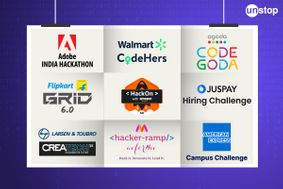
Organize Hackathons: The Ultimate Playbook With Past Case Studies

What is Campus Recruitment? How To Tap The Untapped Talent?
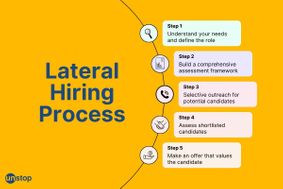
Lateral Hiring: A Complete Guide To The Process, Its Benefits, Challenges & Best Practices
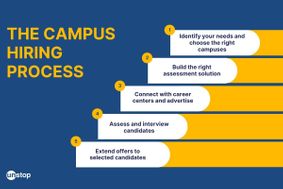








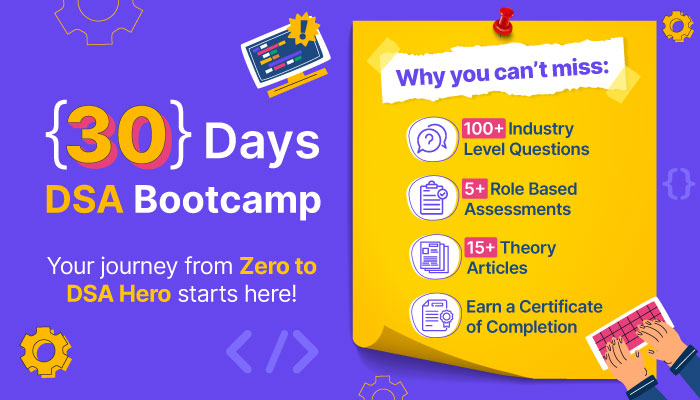


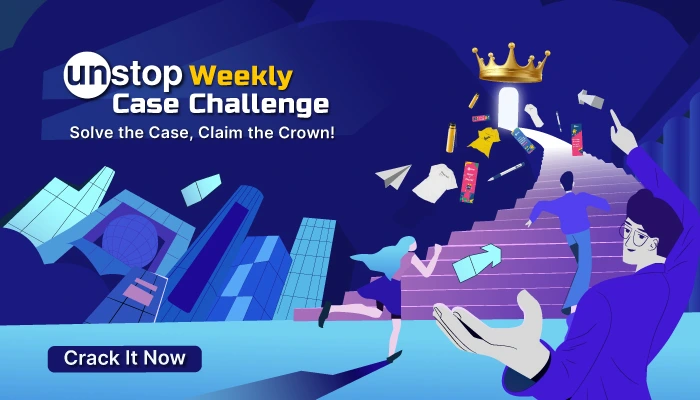
Comments
Add comment